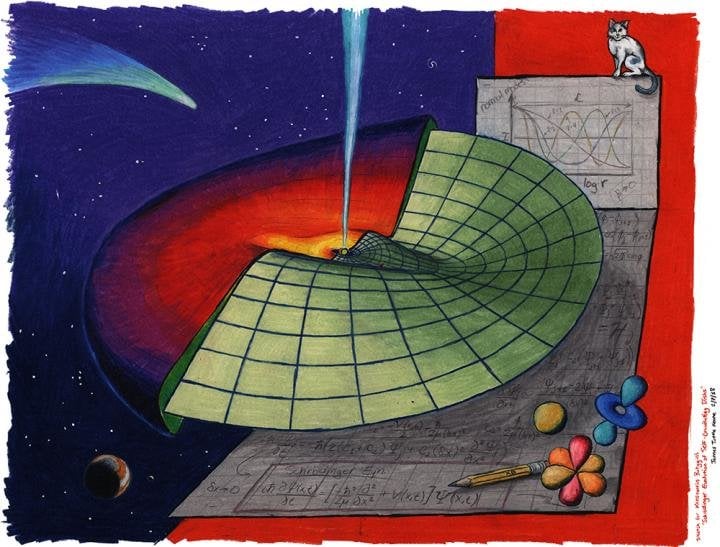Whether massive or minute, the universe’s structures and particles all behave in similar ways, according to a researcher from the California Institute of Technology. Scientists who study quantum physics were already accustomed to using the Schrodinger equation to predict how atomic and subatomic particles will behave, but now, it seems that the same equation can be used to predict how space bodies and structures will behave as well.
Quantum physics is basically the study of how particles move and interact, and researcher Konstantin Batygin with the California Institute of Technology figured out that he could apply the same principles to structures in space. He was looking for an equation that would help physicists determine how structures in space will change over time, and he ended up finding the Schrodinger equation, which is used when studying quantum physics involving atomic and subatomic particles.
He told Space.com that when he made the discovery, he was very surprised because he was expecting a “regular wave equation,” or something similar to “the wave of a string.” Instead, he ended up getting the Schrodinger equation. His discovery indicates that even though astrophysical disks are massive in scale, when they warp, they can behave in ways similar to how tiny particles do.
Batygin discovered the connection between quantum physics, the Schrodinger equation, and space structures while he was teaching a class. He was explaining the way waves move through astrophysical disks in space. Such disks consist of stars around the massive black holes that are in the center of a galaxy and space dust from new star systems.
These astrophysical disks warp in such a complicated manner that it’s difficult for scientists to model out what they will do over any length of time. Physicists can make mathematical predictions for very short timeframes, such as a few orbits of a star, and determine how they may eventually end up dispersed. However, scientists haven’t been able to predict how such disks will warp over hundreds of millennia.
In order to come up with his method using the Schrodinger equation, Batygin looked at how famous mathematicians Pierre-Simon Laplace and Joseph-Louis Lagrange calculated their models of the solar system in the 1770s. It didn’t work well over short periods of time, but the model did correctly show how the orbits of the solar system interacted with each other gradually over time.
In place of each planet’s orbit, he used thin rings to represent various parts of the disk. As he ran the calculations for his system using these rings, he ended up finding the familiar Schrodinger equation. He said his finding makes sense because quantum physics involves treating particles like waves. He also said that his research reveals that astrophysical disks can be added to the list of contexts that can be understood using this same quantum physics framework.





